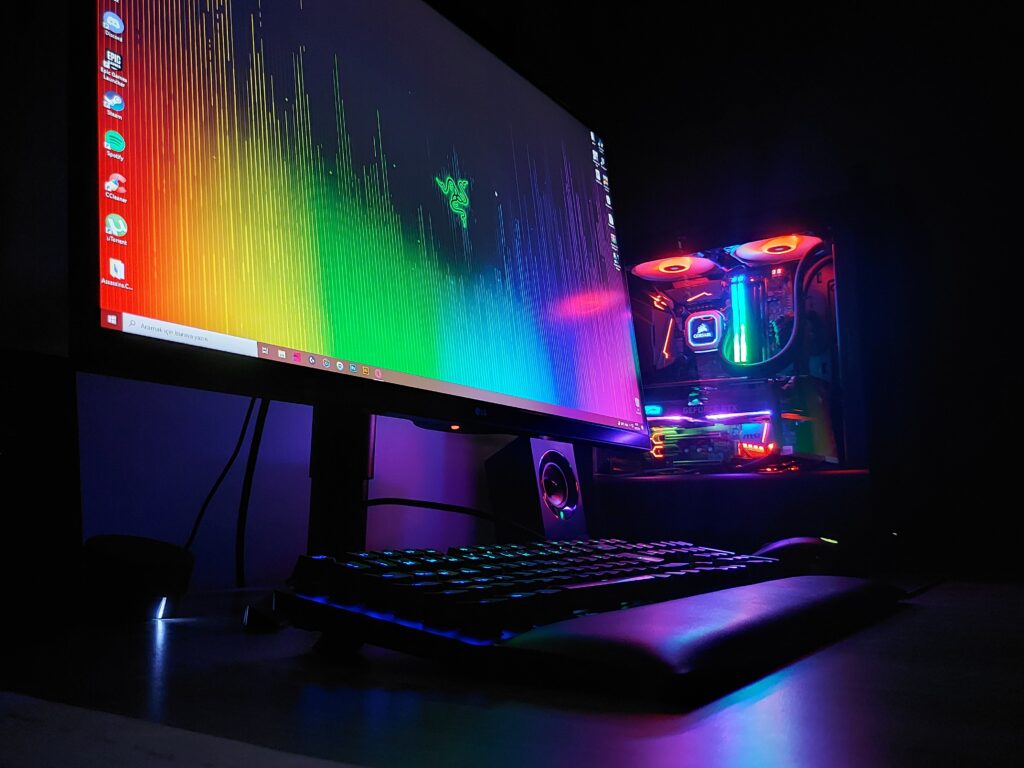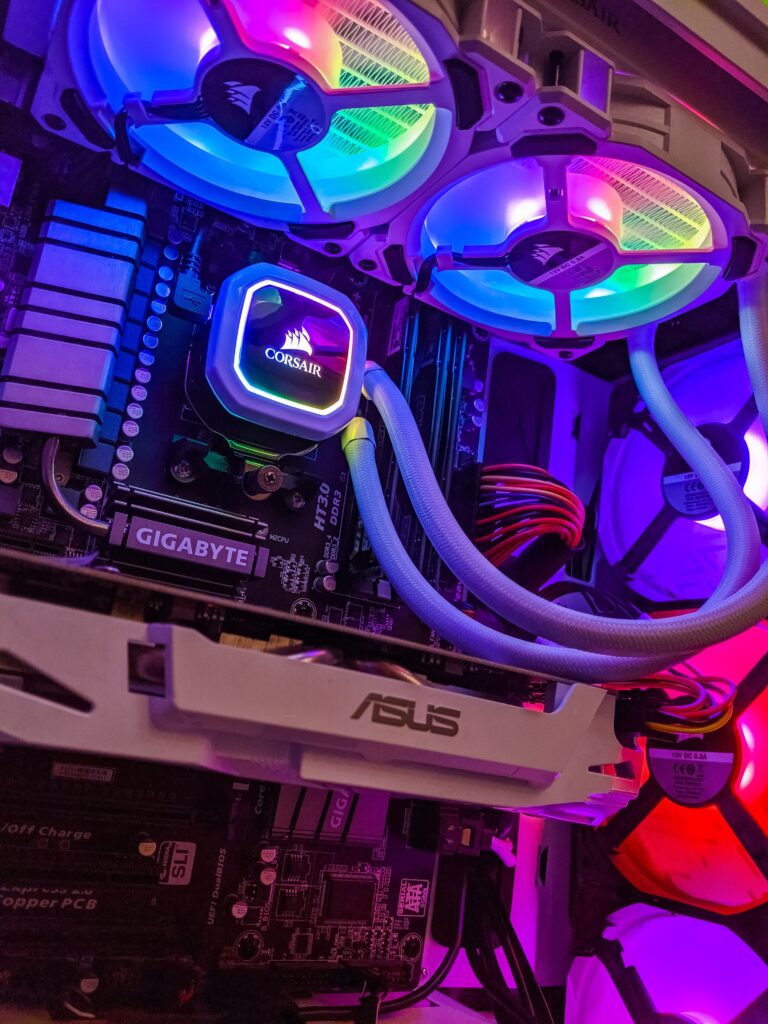Choosing the Right Gaming PC for Your Gaming Style: Exploring the Latest Trends in Gaming PC Technology
Published: 21 Sep 2023
Humera
Are you ready to elevate to the next level of your gaming experience?
Introduction

Whether you are a casual gamer looking to divert yourself in enchanting worlds or a competitive player seeking that extra add-on, a gaming PC is your ultimate gateway to endless adventures.
But to truly engage in this virtual astonishment, you need the right companion – a gaming PC.
In this blog, we go into the thrilling world of gaming PCs, acknowledge the secrets to building your dream rig, cover its full potential, and transform your gaming escapades into memories that will last a lifetime.
Get ready to explore the power and embrace the extraordinary possibilities that await you in the world of gaming PCs.
This blog post aims to serve as a comprehensive guide that equips you with the knowledge and resources to build your gaming PC successfully.
How Pc Builds
We understand that building a gaming PC can be a complex task, especially for beginners.
We aim to simplify the process and provide step-by-step instructions, expert advice, and valuable insights into selecting the right components, assembling them correctly, and optimizing your gaming PC for an exceptional gaming experience.
Let’s start this exciting journey together.
Define the Best gaming PC and how it differs from a regular computer?
| Qualities of Best Gaming Pc |
|---|
|
A gaming PC is a computer system designed and optimized for video game. These components include
|
Key Factors to Consider When Choosing a PSU

When choosing a Power Supply Unit (PSU) for your gaming PC, several factors must be considered to ensure compatibility, reliability, and efficiency.
Here are the key factors to keep in mind:
1:Wattage
A PSU’s wattage determines how much power it can deliver to your PC components.
2: Efficiency Rating
The efficiency rating of a PSU indicates how effectively it converts AC power from your wall outlet into DC power for your components.
Higher efficiency means less wasted energy in the form of heat, resulting in lower electricity bills and cooler operation.
The higher the certification, the more efficient the PSU is. Aiming for at least an 80 PLUS Bronze certified PSU for good efficiency is advisable.
3:Modular vs. Non-modular
PSUs can come in modular or non-modular configurations.
Modular PSUs have detachable cables, allowing you to connect only the cables you need, reducing cable clutter inside your PC case and improving airflow.
Non-modular PSUs
come with a fixed set of cables, which can be less flexible regarding cable management. Modular PSUs generally offer better aesthetics and easier installation but can be slightly more expensive.
4: Brand and Quality
Choosing a reputable PSU brand is essential to ensure reliability, stability, and safety.
Trusted PSU manufacturers include
Corsair, EVGA, Seasonic,
Thermaltake, and Be Quiet!, among others.
These brands often provide better build quality, robust protection features, and better customer support.
It’s advisable to read reviews and check user feedback to gauge the reliability and performance of a particular PSU model.
Must Read: Advantage and Disadvantages of Computer
How to Set Up Gaming PCs Step-by-Step?
Step 1: Gather the necessary components and tools for Pc Builds
Components
Identify all the components you’ll assemble, such as a computer, furniture, or any other item.
Tools
Prepare a set of tools that you’ll need for assembly.
It may include screwdrivers (both Phillips and flathead),
a hammer, pliers, an Allen wrench set, a level, and any specific tools mentioned in the assembly instructions.
Step 2: Read the assembly instructions
Carefully read and understand the assembly instructions provided with your components.
Step 3: Clear the assembly area
Clear a spacious, well-lit area to assemble your components.
Ensure enough room for all the parts, tools, and yourself.
Remove any obstacles or clutter that could impede the assembly process.
Step 4: Organize the components
Lay out all the components in an organized manner, preferably following the order mentioned in the assembly instructions.
Step 5: Take safety precautions
Before starting the assembly, consider the following safety precautions:
Wear appropriate safety gear, such as safety glasses or gloves, if necessary.
Ensure that the assembly area is free of hazards, like loose cables or sharp objects.
If the components require electrical connections, unplug them from power sources before handling any electrical parts.
Step 6: Start with the base or frame
Begin by assembling the base or frame of the component.
Follow the instructions provided, connecting the pieces securely.
Use the appropriate tools, such as screwdrivers or Allen wrenches.
Step 7: Attach additional components
Continue assembling the components in the order specified in the instructions.
It might include attaching legs, shelves, brackets, or other parts.
Ensure everything is securely fastened, following the instructions and guidelines.
Step 8: Connect electrical components (if applicable)
If your assembly involves electrical components, follow the instructions carefully to connect the wires, cables, or other electrical parts.
Be cautious and avoid touching any exposed wires or connections without proper insulation.
Step 9: Check for stability and levelness
Once you have assembled the components, check for stability and levelness.
Use a level to ensure that surfaces like shelves or tabletops are horizontal and balanced.
Make any necessary adjustments to ensure stability.
Step 10: Finalize assembly and clean up
Double-check that all components are securely fastened and in their correct positions.
Clean up any debris or packaging material, ensuring the area is tidy and safe.
Step 11: Test the functionality (if applicable)
For components like electronics or appliances, it’s a good practice to test their functionality once assembled.
Plug them into a power source (if required) and ensure they work as intended.
Refer to the user manual or instructions for any specific testing guidelines.
Remember to take your time, stay focused, and consult the assembly instructions.
Must Watch
Conclusion
Proper maintenance of your gaming PC through regular cleaning, software updates, storage management, temperature monitoring, data backup, and an organized workspace is essential for maximizing performance, ensuring longevity, and providing an optimal gaming experience.

- Be Respectful
- Stay Relevant
- Stay Positive
- True Feedback
- Encourage Discussion
- Avoid Spamming
- No Fake News
- Don't Copy-Paste
- No Personal Attacks

- Be Respectful
- Stay Relevant
- Stay Positive
- True Feedback
- Encourage Discussion
- Avoid Spamming
- No Fake News
- Don't Copy-Paste
- No Personal Attacks





